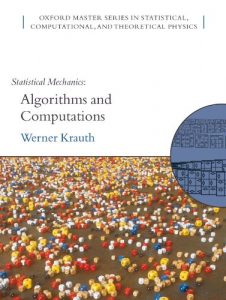This book discusses the computational approach in modern statistical physics in a clear yet accessible way, and works out its intimate relations with other approaches in theoretical physics. Individual chapters focus on subjects as diverse as the hard sphere liquid, classical spin models, single quantum particles and Bose-Einstein condensation. They contain in-depth discussions of algorithms ranging from basic enumeration methods to modern Monte Carlo techniques. The
emphasis is on orientation. Discussions of implementation details are kept to a minimum.
The book heavily relies on illustrations, tables and concise printed algorithms to convey key information: all the material remains easily accessible. The book is fully self-contained: graphs and tables can be readily reproduced by programming at most a few dozen lines of computer code. Most sections lead from an elementary discussion to the rich and difficult problems of contemporary computational and statistical physics, and will be of interest to a wide range of students, teachers and
researchers in physics and the neighboring sciences. An accompanying CD allows to incorporate the layout material (illustrations, tables, schematic programs) into the reader's own presentations.
emphasis is on orientation. Discussions of implementation details are kept to a minimum.
The book heavily relies on illustrations, tables and concise printed algorithms to convey key information: all the material remains easily accessible. The book is fully self-contained: graphs and tables can be readily reproduced by programming at most a few dozen lines of computer code. Most sections lead from an elementary discussion to the rich and difficult problems of contemporary computational and statistical physics, and will be of interest to a wide range of students, teachers and
researchers in physics and the neighboring sciences. An accompanying CD allows to incorporate the layout material (illustrations, tables, schematic programs) into the reader's own presentations.



